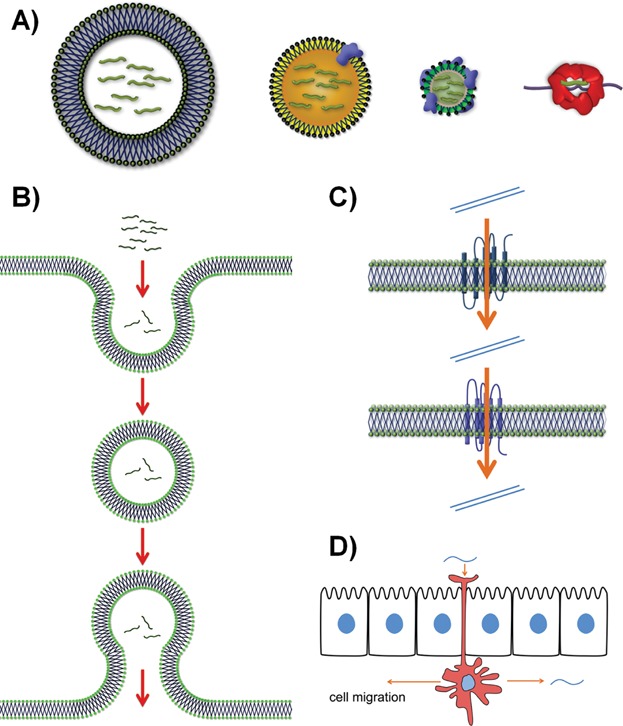Figure 3.

Extracellular carriers and trans-barrier transport of RNA. A: Extracellular RNA is carried by and protected by incorporation into extracellular vesicles (EV, left) including exosomes, microvesicles, some viruses, and other membrane-bound entities; low-density (middle left) and high-density (middle right) lipoprotein particles; and protein complexes such as Argonaute-containing structures (right). The number of RNA molecules within such carriers is not well known. B: Transcytosis may deliver RNA from one side of a cell barrier to the other. Although uncomplexed RNA is shown here, uptake of RNA carriers is more likely. C: Transfer of RNA molecules via transmembrane channels. Here, a double-stranded species is transferred. D: Immune cells in biological barriers may sample nucleic acids and other molecules on one side and release them on the other, with or without movement of the immune cell to a new location.
